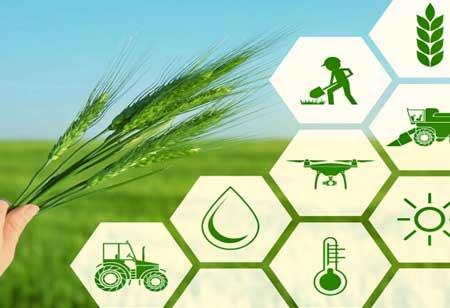

Thank you for Subscribing to Agri Business Review Weekly Brief

The precision farming system aids in advancing sustainable agriculture by enabling the resolution of increasingly pressing economic and ecological issues.
World bank estimates that there will be nine billion people on the earth by the year 2050, which means that we will need to produce almost 70 per cent more food than we do now to feed them. Precision farming, made possible by the development of ever-more complex technologies, is the practice of using a variety of techniques and tools to assist farmers in improving and increasing soil quality and productivity through the application of several carefully planned and timed critical interventions, by facilitating the settlement of ever-more-urgent economic and ecological issues. It is called "precision" because it can perform the proper intervention at the correct time and location for a specific crop or geographical location, which is why it is state-of-the-art equipment. Technology is mostly used to collect the data and information required to make decisions on how to boost productivity, after which the appropriate corrective actions are put in place to accomplish this goal. One such system uses a variety of technologies, including satellite images, GPS, and drones. Precision farming seeks to increase productivity and efficiency while reducing labour costs and enhancing environmental sustainability. Technologies used in Precision Farming: Sensor-based Technology Wireless sensors have been effectively used in precision agriculture to gather data on soil water availability, soil fertility, plant water status, local climatic data, insect-disease-weed infestation, and other topics. These sensors can be put on machines such as cars, satellites, robots, or drones to collect and analyse soil. GPS and GIS-based Technology For everything from farm planning to field mapping, soil sampling, tractor navigation, crop scouting, variable rate applications, and yield mapping, precision agriculture uses the Global Positioning System (GPS) and Geographic Information Systems (GIS). Additionally, they aid in mapping crop problem areas, such as weeds and disease, as well as roadways, irrigation systems, and field boundaries. Satellite-based Technology Satellites are being used in agriculture in a variety of ways, beginning with estimating yields. Optical and radar sensors may differentiate between various crop varieties, assess the health and maturity of the crops, and provide an exact representation of the farmland. This data can assist with market education and give farmers advance notice of natural disasters like hunger or crop failure. Internet of Things (IoT) The term IoT is becoming more common in precision agriculture because of the value it offers. An irrigation system automation system and a sensor-based agricultural field monitoring system are both part of IoT-based smart farming (light, humidity, temperature, and soil moisture). Farmers may monitor the condition of their fields with IoT from any location. IoT-based smart farming is substantially more effective than conventional farming. Drone Technology One of the most recent developments is the expanding use of small unmanned aerial vehicles (UAVs), also referred to as drones, in agriculture. Drones are unmanned aircraft that are remotely operated. These can significantly improve the gathering of geographic information and the support for agricultural planning that is based on evidence. These devices and technologies can provide beneficial Drones can aid with soil and drainage investigations, crop health evaluations, and the variable-rate application of liquid pesticides, fertilisers, and herbicides. The Benefits of Precision Agriculture The ultimate objective of precision farming is to raise output while consuming fewer resources and upholding high standards of quality. Precision agriculture helps the environment and farmers. Reducing Costs One of the main advantages of precision agriculture is the capability to precisely reduce pesticide, fertiliser, and seed rates in areas where they are not economically viable. Site-specific management is the process of administering inputs (such as chemical fertilisers and pesticides) in the proper quantity, at the proper time, and at the appropriate location. By employing sensors and software to analyse crop health, farmers can gain insights about the amount of fertiliser or herbicide needed. This knowledge can be beneficial in the long run. Promoting Sustainable Agriculture Making sure that applied crop input ingredients reach the plant and have no adverse effects elsewhere in the environment promotes a safer environment in addition to helping the bottom line. Prevents Soil Deterioration Precision farming prevents the overuse of chemicals, which means that harmful chemicals cannot seep into the soil because they cannot be applied. Increased Productivity One of precision agriculture's main benefits is its ability to understand the different types of soil and nutrient levels on a farm. The water retention capabilities, nitrogen mineralisation rates, and other properties vary between fields and geographical areas. Understanding these variances enables us to either reduce excessive nitrogen application, which can lead to lodging, or increase the number of minerals like potassium, which enhance standability in areas where it is lacking. Increased Profit Due to decreased input costs and higher yields, precision agriculture is more profitable than traditional agriculture. Precision farming also helps to increase crop yields of higher-quality crops. Crop failure is also decreased by precision farming. Modern agricultural practices like precision farming use technology to increase crop yields and reduce waste. This cutting-edge technology has huge promise to assist more sustainable agriculture. Raising an understanding of precision farming can be very helpful in boosting crop yields, reducing waste, and improving the sustainability of farming. Adopting precision farming practices has the potential to improve agriculture's production and sustainability significantly.